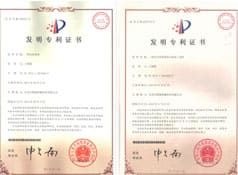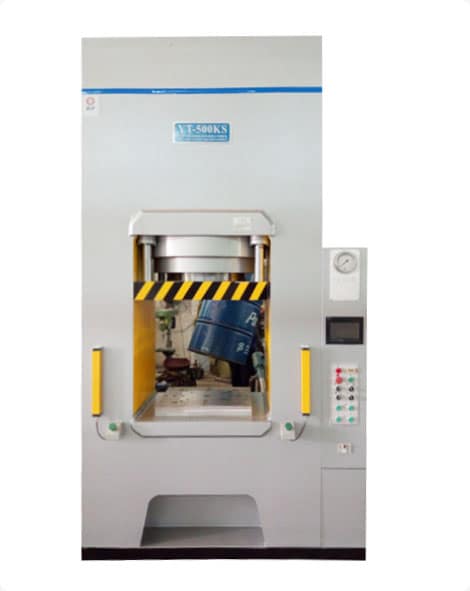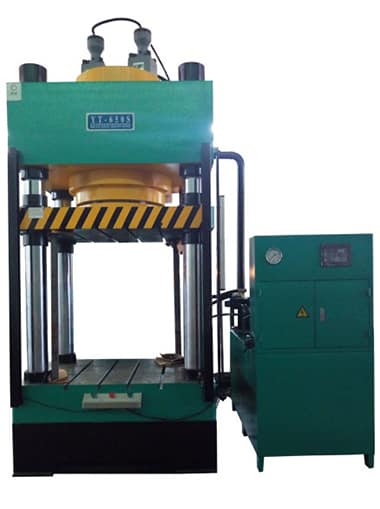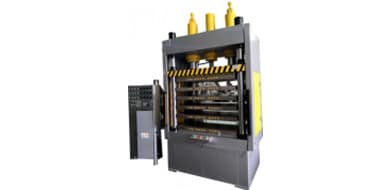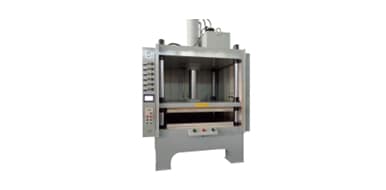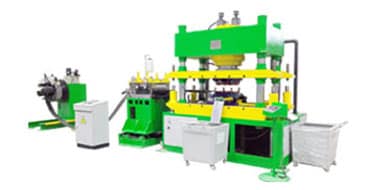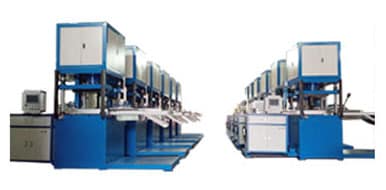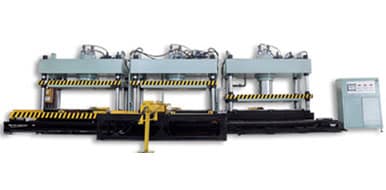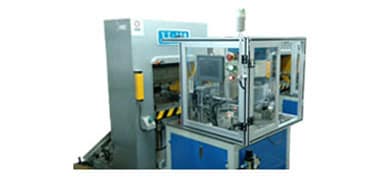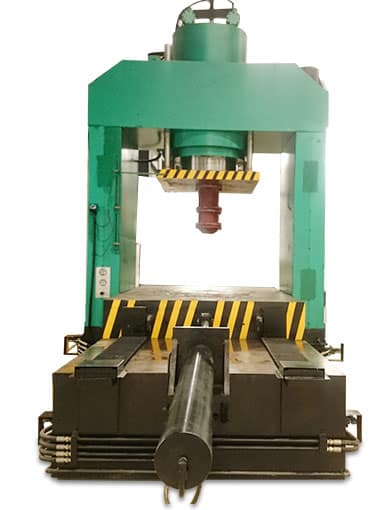Calculating How Much Force in Hydraulic Press
time:2023-12-02 views:(点击 1,155 次)
Hydraulic presses have the ability to produce enormous forces, making them suitable for numerous industrial uses such as forming metal parts or crushing cars.
Pascal's Law allows hydraulic presses to magnify small forces by multiplying them by the ratio between piston area and cylinder area, so let's take a look at how this works in more detail.
Pressure Capacity
Hydraulic presses are capable of producing tremendous force, making them suitable for many industrial applications. Their immense power comes from using hydraulic fluid to move small pistons against larger ones which exerts force against material being compressed.
Presses can vary greatly in their pressure capacity depending on factors like its cylinder diameter, piston radius, affected material area and how hard its being compressed. As these variables increase so will its press pressure capacity; pounds per square inch (PSI) measures how much force can be exerted over a surface area in which force has been exerted upon.
Hydraulic presses are often utilized for metalworking applications, but they also perform numerous other tasks including deep drawing, shell reductions, urethane bulging, forming, blanking, punching, shears piercing and assembly. Press fitting is another advantage as a tight fitting bearing onto a shaft can be created without using mechanical fasteners - ideal for creating press fit assemblies!
Modern computer interfaces and monitoring have made hydraulic presses even more versatile than ever, enabling users to set ram speed, stroke length, dwell pressure time on workpiece and reverse at pre-set pressure - further cutting labor costs while speeding setup/changeover times.
Another key benefit of hydraulic presses is their safety features. Both ram speed and stroke can be tightly managed to avoid accidents, while most models include overload protection that shuts off when reaching certain preset limits.
To use a hydraulic press, first activate it using its control panel or push-button controls. Next, lower the ram to apply pressure to whatever material is being compressed while closing its die to shape or compress it. When finished, release the ram by using its control panel to reverse its direction and lift it back up again - to make sure no over-pressing takes place keep an eye out throughout this process and monitor whether any material stretches beyond its limits.
Piston Diameter
A hydraulic press is a powerful mechanical device that uses high-pressure incompressible fluid to crush and compress materials for various industrial uses. The force it exerts can be measured in pounds per square inch (psi), so to calculate its force you must know both its working pressure and piston diameter.
Hydraulic presses work similarly to any other hydraulic system: two interconnected cylinders - one smaller than the other filled with high-pressure hydraulic oil - connected by pipes are interlocked together by their connections and when pressure is applied at either cylinder, Pascal's law increases pressure throughout the system and this increased pressure is transferred over to the larger cylinder multiplied many times over, enabling relatively small pistons to exert force sufficient to lift or destroy anything that comes their way.
Since hydraulic pressure can be generated over a wide area, its force requirements are relatively low. If, however, applied to smaller surface areas instead, then force requirements increase substantially - thus explaining why hydraulic presses use such small pistons yet still manage to produce considerable force.
Engineers have designed their system with valves in order to maximize force transfer from smaller pistons to large pistons, increasing force transfer from smaller pistons. When connecting large and small cylinders together, one valve closes while pumping additional hydraulic oil, before opening another to return all valves back to their original positions and pumping again - this cycle continues until all necessary oil has been added back in - or whenever this process needs repeating itself.
Simple math will demonstrate that the larger a piston is, the more force it can generate. That's why hydraulic presses come in various sizes to meet various tasks; however, it should also be noted that military explosives such as RDX may also be used.
Piston Radius
Hydraulic systems consist of two interconnected cylinders filled with incompressible fluid - typically oil. When an increase in force (pressure) is applied to one cylinder, thanks to Pascal's law it will travel undiminished through both of them and can even increase as the larger cylinder has more surface area than its smaller counterpart. This basic principle forms the basis of hydraulic presses and can help predict their capacity by calculating their mechanical advantage.
Calculations are performed by dividing the pump cylinder's piston area by its displacement, as demonstrated in the following diagram. A one pound load applied to P1 of one pump results in an increase in pressure equivalent to (1/2)*P1, which then transfers over into every square inch of its larger counterpart's (10/2)*P2 area (10/2)*P2), creating an equivalent force of (1/2)*P2 equaling 2,000 pounds of force applied directly by one piston - as volumetric weight proportionally correlates directly with mechanical advantage - something expressed as ratio of pumps' piston diameters as seen here.
While this method provides an effective means of calculating hydraulic press force, additional considerations must be taken into account in terms of control. Impact speed of the work piece is of vital importance if throughput is to be maximized - this requires precise velocity control from mechanical presses, which cannot easily adapt to changing loads as quickly as hydraulic presses do.
Cushions may also help reduce energy requirements for making parts, as they absorb some of the force before reaching the workpiece. Unfortunately, this adds time and makes control more complex since you must reposition the cushion prior to each new job.
Area
Hydraulic presses are versatile machines used in numerous industries. They work by using hydraulic fluid to transfer force from a small piston to a larger one, creating massive amounts of force which make these presses so useful in many different situations. There isn't just one size of hydraulic press available - they come in all sorts of sizes to meet different applications' specific needs.
Hydraulic presses typically utilize hydraulic cylinders, which consist of two components - the master cylinder (which holds hydraulic fluid) and its slave cylinder (attached). Force applied to small piston is transferred directly to fluid within master cylinder and used to generate hydraulic pressure - this in turn is used to crush items being pressed.
Pascal's principle allows a hydraulic press to generate such great force: any pressure applied to an incompressible liquid will be transmitted evenly throughout its system, meaning force exerted on either piston of a hydraulic cylinder will equal that exerted on large piston of master cylinder and will therefore raise both hydraulic cylinder and Ram - this continues until desired pressure has been attained.
When working with a hydraulic press, the most essential aspect to remember is that fluid pressure can be calculated easily using an easy formula. This formula takes into account factors like fluid density, force applied to piston and area of piston. By using this formula you can easily calculate force applied to workpiece and ensure it will not be damaged - multiply pressure in pounds per square inch by piston surface area in square inches then divide by 2,000 to get force in tons.
Link to this article: https://www.ihydraulicpress.com/nsn/5624.html
Hot Articles
-
How to Make a Hydraulic Press Model
Hydraulic presses use liquid under pressure to exert force on an anvil and die, making it easy to crush all sorts of items. Individuals looking to g……
-
How to Make a Hydraulic Press at Home
Many DIYers enjoy making, repairing and redesigning objects; others are drawn to crushing, breaking and destroying things. An industrial sized hyd……
-
How to Make a Mini Hydraulic Press Machine
A hydraulic press is a type of machine that employs pressure to deform materials. It can be used to crush metal objects or mold materials into dif……
-
How to Make a Hydraulic Rosin Press at Home
Producing quality rosin requires several components. A quality shop press, rosin plate set and an accurate pressure gauge will all help get the jo……
-
How to Make a Hydraulic Press YouTube
Hydraulic presses have become the go-to machines in numerous YouTube videos for crushing objects. These videos use Pascal’s law as their bas……
-
How to Make a Hydraulic Heat Press Machine
Hydraulic presses utilize Pascal’s law to multiply small forces applied over an area into greater ones. They’re highly versatile and use……
-
How to Make a Hydraulic Press
Hydraulic presses find applications across multiple industries. Junkyards use them to crush cars, fabricators employ them for bending and pressing……
-
How Much Money Does the Hydraulic Press Channel Make?
Established in October 2015, the Hydraulic Press Channel (HPC) features videos of objects being crushed with hydraulic presses. Operated by Finnish ……
Latest News
-
How to Make a Hydraulic Press Machine
Hydraulic presses are machines that utilize compressed fluid to apply force. They’re commonly found across a range of manufacturing and prod……
-
How to Make a Hydraulic Press for Forging
Forging involves applying force and deforming hard metals to achieve specific tolerances and shapes. There are various techniques used for forging, ……
-
How to Make a Bottle Cap Hydraulic Press
A bottle cap hydraulic press is a machine designed to close beer bottles using human force alone. It relies on Pascal’s Law which states that ……
-
How to Make a Hydraulic Briquette Press
Hydraulic briquette presses operate under higher pressure than traditional roller and screw type briquetting machines, enabling it to bind materia……
-
How to Make a Hydraulic Rosin Press
Rosin is an easy and potency concentrate to produce at home using basic equipment – you just need hydraulic and heated systems such as this ……
-
Can a Hydraulic Press Make a Diamond?
A hydraulic press is an indispensable machine, capable of creating great amounts of force by compressing liquid into smaller volumes and thus prod……
-
How Much Force Does a Hydraulic Press Exert?
A hydraulic press is an instrument that leverages Pascal’s Law to generate incredible force. According to this principle, any pressure exert……
-
How to Make a Bottle Cap Hydraulic Press
A bottle cap hydraulic press is a metal machine that utilizes human force to seal bottles, with up to 26mm caps being handled by its device. Its lev……


